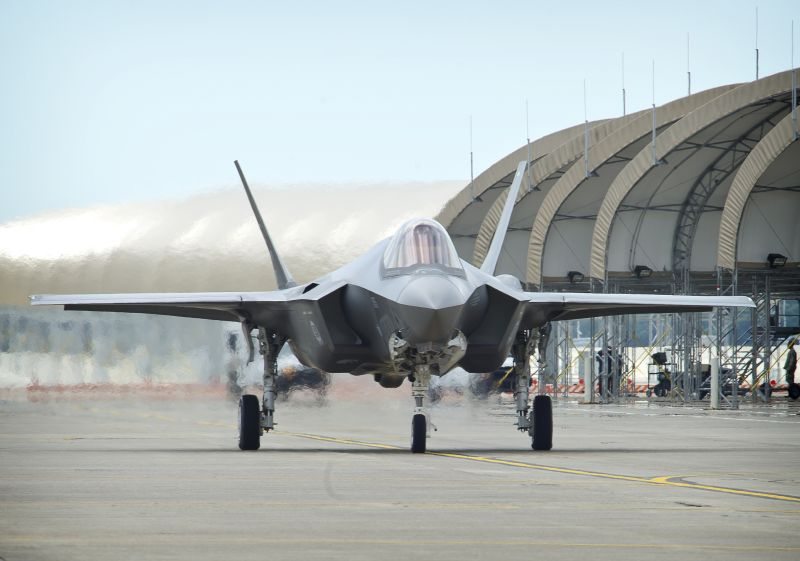The F-35 Lightning II will enhance combat capabilities, project U.S. power and deter potential adversaries, Air Force officials told members of the Senate Armed Services Committee’s subcommittee on tactical air and land forces in a hearing on tactical aircraft programs there, April 8.
“The F-35 will form the backbone of U.S. air combat superiority for generations to come,” said Lt. Gen. Christopher Bogdan, the F-35 Lightning II Joint Program Office executive officer. “It will replace the legacy tactical fighter fleets of the Air Force, Navy and Marine Corps with a dominant, multirole, fifth-generation aircraft.”
The fighter jet is scheduled to be at Marine bases in the summer of 2015, with the Air Force receiving aircraft the following summer, officials said.
“It takes the combined efforts of all of our military services and the whole of the government to deny, deter and defeat and enemy,” said Lt. Gen. Charles Davis, the military deputy to the assistant secretary of the Air Force for acquisition. “The Air Force is an active partner in Department of Defense planning that will shift our emphasis from today’s wars to a broader range of challenges and opportunities.”
The hearing also included testimonies from Vice Adm. Paul Grosklags, the principal military deputy to the assistant secretary of the Navy for research, development and acquisition; and Lt. Gen. Robert Schmidle, Jr., the Marine Corps deputy commandant for aviation.
All men agreed the way of the future is the F-35, especially with its technological advances and enhanced operating capabilities.
“My team is focused and committed to doing the very best we can for the warfighters, taxpayers and our partners, to ensure that the F-35 meets the needs of all our nation’s defenses,” Bogdan said. “To that end, my team is rising to the challenge of managing this very large, complex program with integrity, transparency, accountability and discipline, to ensure that we develop and deliver the warfighting capability this country needs and expects.”
Bogdan noted budget constraints, and told the committee affordability remains his top priority for this aircraft.
Davis added maintaining balance between force structure, readiness and modernization has been a guiding principle in future planning.
“Our chief (of Staff) and our Secretary (of the Air Force) have been very clear that there are some enduring capabilities your United States Air Force provides, and these are missions they are expected to perform at any time, on any given day,” Davis said. “We have a very challenging situation as we go forward. There are no easy choices; there are some choices that are easier than others that will provide the enduring capabilities the United States expects the United States Air Force to provide.”









